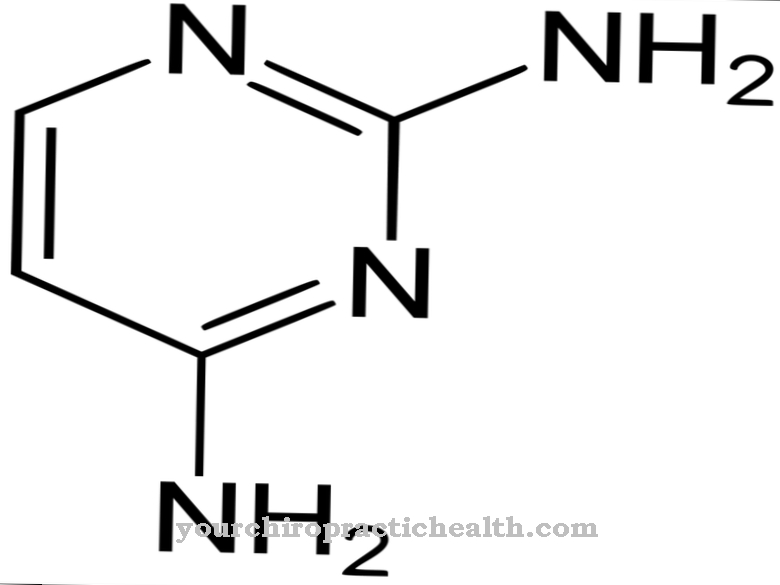As Vancomycin is called a glycopeptide antibiotic. It is used when other antibiotics are no longer effective due to a resistance of the bacteria.
What is Vancomycin?

Vancomycin is a glycopeptide antibiotic that is used to treat gram-positive bacteria. It takes on the status of a reserve antibiotic and is used to treat inflammation of the inner lining of the heart (endocarditis) or inflammation of the meninges (meningitis).
Vancomycin was developed in the 1950s. The manufacturers obtained the remedy from cultures of the Amycolatopsis orientalis bacterial species. In 1959, the glycopeptide antibiotic came onto the market. However, it was not until 1980 that the active ingredient was successfully administered against staph bacteria, which were resistant to other antibiotics. As hospital germs, staphylococci are responsible for nosocomial infections.
Vancomycin is one of the third line antibiotics. It is usually only used when other antibiotics are no longer effective due to the resistance of the staphylococci.
Pharmacological effect
Together with teicoplanin, vancomycin represents the group of glycopeptide antibiotics. This means that it has the property of inhibiting the bacterial cell wall protein murein. Murein is extremely important for bacteria. When it is inhibited, vancomycin develops bactericidal effects which, after a certain time, lead to the destruction of the bacteria.
However, the duration of action of vancomycin is significantly shorter than that of teicoplanin. Another disadvantage of the product is that it is poorly tolerated by some patients.
Because vancomycin intervenes in the cell wall structure of the bacteria and therefore the germs die, the immune system only has to remove the pathogens from the organism. As a result, the patient quickly gets better.
The advantage of vancomycin is that glycopeptide antibiotics still work well against most types of bacteria. These include primarily staphylococci such as the hospital germ Staphylococcus aureus and the enterococci bacteria. In recent years, however, some bacterial strains have also developed resistance to vancomycin, which poses further problems for medicine.
In the case of oral ingestion of vancomycin, the drug does not enter the blood from the intestine. So the intestinal wall cannot be overcome by the antibiotic. This can be useful when treating local intestinal infections. In order for vancomycin to work in body tissue, it is necessary to inject the active substance directly into the bloodstream. The antibiotic is eliminated from the body through the urine.
Medical application & use
Vancomycin is usually administered for bacterial infections against which other antibiotics such as cephalosporins, macrolide antibiotics or penicillins can no longer have an effect because the pathogens are resistant to them or the patient suffers from a severe allergy to conventional antibiotics.
Vancomycin is used for bacterial blood poisoning (sepsis), endocarditis (inflammation of the inner lining of the heart), pneumonia, infections of the soft tissues, inflammation of the bone marrow and periosteum and bacterial joint inflammation.
Vancomycin is also used in surgical interventions. The agent is used to prevent bacterial infections of the heart, joints, bones and blood vessels.
Vancomycin is only taken as a capsule to treat severe intestinal infections. This is mostly a pseudomembranous enterocolitis. This often results from treatment with other antibiotics. Vancomycin is also administered via an infusion.
In the event of a serious bacterial disease, vancomycin can already be used in babies. Vancomycin requires a prescription. Therefore, the product can only be obtained by presenting a doctor's prescription at the pharmacy.
Risks & side effects
Vancomycin can cause undesirable side effects in about 1 to 10 percent of all patients. It is not uncommon for allergic reactions or gastrointestinal problems to occur. Other side effects can include rash, itching, damage to the kidneys, inflammation of the mucous membranes, ringing in the ears, nausea, vomiting, chills, fever, inflammation of the blood vessels, low blood pressure or shock. In the worst case, there is even a risk of cardiac arrest. An overgrowth of fungi on the body is also rarely possible.
Vancomycin must not be given at all if the patient is hypersensitive to the substance. If there is severe hearing damage, infusion treatment with vancomycin is only possible if the patient is in mortal danger. The antibiotic should only be used during pregnancy if the doctor has carefully weighed the risks and benefits beforehand. Vancomycin can only be used during breastfeeding if there is no other treatment option, as the agent passes into breast milk and can cause health problems in the baby.
There is a risk of drug interactions by taking vancomycin at the same time as other drugs. For example, if the antibiotic is administered with aminoglycosides, this can have negative effects on the ears and kidneys. In addition, anesthetics have an intensifying effect on allergies to vancomycin, which are noticeable in a drop in blood pressure or changes in the skin.
The administration of vancomycin has no negative effects on reactivity. In this way, the patient can easily take part in road traffic. It is also possible to operate heavy machinery.



























